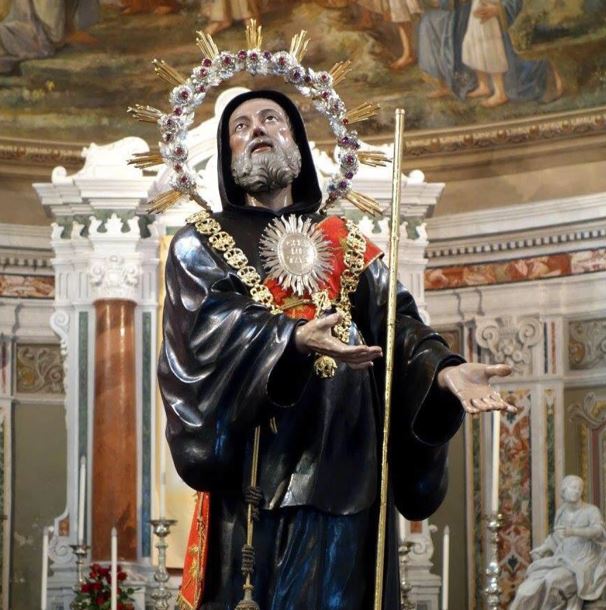
Author: Unknown southern sculptor
Dating: Mid. XVIII
Material: Wood carved and painted
Dimensions: cm 180×89 approx.
Location: Milazzo, church of Jesus and Mary
The simulacrum depicts San Francesco di Paola, co-patron with Santo Stefano Protomartire of the city of Milazzo. Although it is an object of ancient and lively devotion as well as of undoubted quality and mentioned by a vast literature, it lacks specific and scientific studies aimed at investigating and clarifying its executive events. According to reports by Antonio Micale and Giovanni Petrungaro, would have been made in 1702 by an unknown Neapolitan artist, following a decision taken by the General Council of Milazzo, in 1696, which provided for the proclamation of the Calabrian Saint as protector of the town of Capo. This information, however, as substantiated, can not be accepted sic et simpliciter, in the writings of the two scholars, and often refuted by unequivocal documentary evidence or, in the case of references to works of art, by obvious stylistic differences.